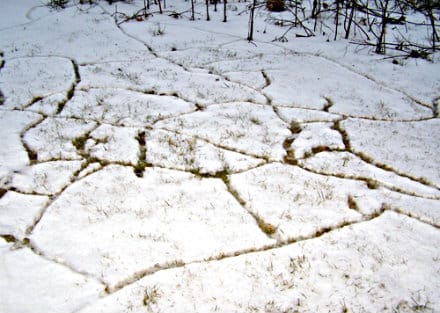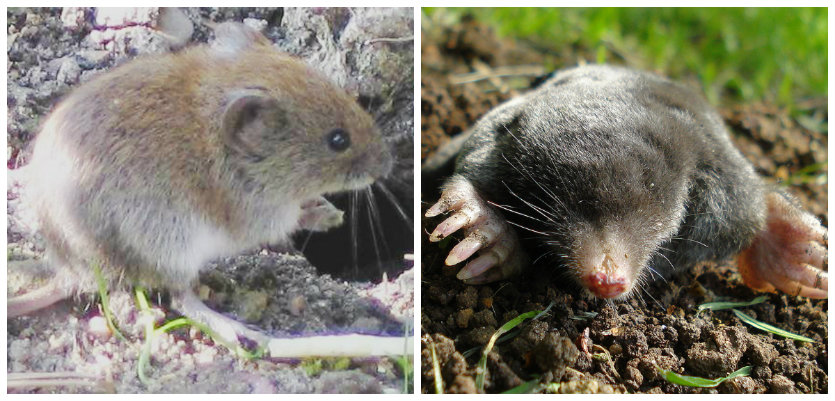Moles Are Good, Voles Are Bad, And How To Tell The Difference
Dealing with voles can be difficult, but here are some ways to control the damage.

Dealing with voles can be difficult, but here are some ways to control the damage.

Vole tunnels in the snow
Although our snow totals this year have been on the lighter side, we’ve still had some accumulation and, as that snow has melted on warmer days, the receding inches have revealed some curious tracks that look like tunnels.
Maybe you’ve seen something similar in your yard? If you have, congratulations! You more than likely have voles. Voles are rodents that resemble mice, although they are stouter, and have longer hair and shorter tails. Many confuse the lawn damage and “runways" they create for the work of moles, but there are some very big differences between the two and it’s important to be able to tell them apart. In terms of damage done to your garden, voles are the real culprit. Although moles can cause some havoc on your lawn with their tunneling and mounding, they're insectivores, feeding mostly on earthworms and bugs.

That's a vole on the left, a mole on the right. (Photos: Wikipedia)
Voles, on the other hand, eat plant roots, bulbs and the bark of young trees (especially fruit trees). Voles are also incredibly prolific breeders and have no problem inviting friends over for dinner, where moles are mostly solitary. If you get rid of your mole, there probably isn’t another one too close by. Voles are a different story. Dealing with voles can be difficult, especially if you're opposed to poisons and kill traps (good old-fashioned snap traps work great).
One way to handle them is to keep snow cleared from around the base of your trees and garden beds. Without snow to tunnel through, they'll often steer clear of areas that are too exposed to the elements and predators. (Speaking of predators, cats make great pest control and love to hunt. If your vole party is getting out of control, shoo the cat outside for a little bit and make it earn its keep.)
Because voles don’t dig too deeply into the ground, another method of control is to put a lip of gravel around your beds a few inches deep. Gravel is hard for voles to tunnel through, so they'll usually avoid it. Chicken wire on top of the soil also works well to keep voles from tunneling down and getting all of your spring bulbs.
For your trees, try wrapping them in hardware cloth starting at the base and going at least two feet up the trunk of the tree. This will provide some protection for the bark at the base, where tunneling occurs.
Like mice and other rodents, voles can get out of hand if not managed properly. If you see that you're starting to have a problem, it's better to deal with it before the pest population becomes so overwhelming that it’s impossible to control.








